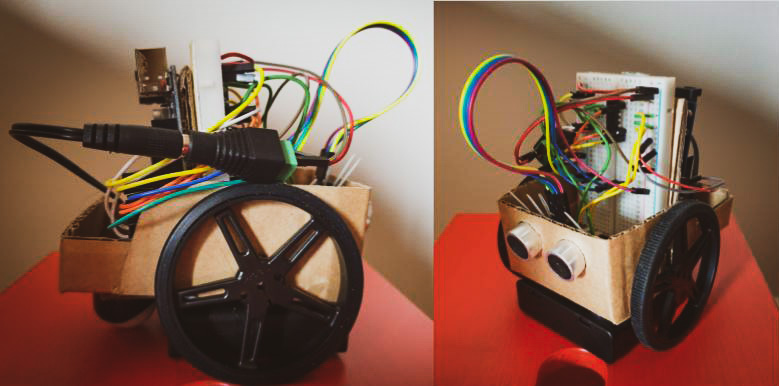These are certainly challenging times in which to be teaching. Two years ago we were stressed out because the campus flooded and half the students in our course missed one of their lectures. It’s safe to say that our threshold for stress is a lot higher now.
For students the transition to remote learning can be overwhelming too, as they need to learn in a different way. In this post we’ll talk about what we have learned about helping students get what they need from our experience of teaching a large, project-based course via remote learning in semester 1.
Our course is Discovering Engineering (ENGN1211), in which 200 first-year students work in groups of four to create a small autonomous vehicle that can drive around a maze. There were a lot of practical challenges with getting this course to work remotely, but the key principles are the same as for teaching at any time: interaction, accountability and support. The challenge was figuring out how to provide these via remote learning. These are the things we found that worked.
Early on in the course we started teaching the international students remotely, and we were quickly confronted by a sea of black squares in Zoom meetings, as students sat there with microphones and cameras switched off. This gives zero interaction, and it’s a bit like teaching to a blank wall. At first we weren’t sure what to do about this, but when the campus closed, we brainstormed ideas.
Our solution for computer labs was to put the students into breakout rooms of about four students within a Zoom session, with a worksheet to complete. During the two hour computer lab, the tutor could pop into the different breakout rooms to talk to the students, and for the rest of the time the students could talk amongst themselves and work together. The students were a lot more comfortable interacting in these smaller groups – often interacting more than they would within a classroom.
In order to keep students on track with their projects, we replaced our scheduled two hour lectorial time with 15 minute Zoom sessions for each project group with their tutor (and a recorded video lecture). During the session, each group needed to report progress to date against project milestones, as well as how their team was working together and how they planned to meet upcoming milestones.
Interestingly this worked better than the in-person sessions in lectorials that we had previously used, because tutors had more time with each group and were in a quieter environment. Also, because the meetings were via Zoom, the students effectively have name tags, making it easier to be more supportive of individuals. This also helped with making modifications to groups and to project scopes where required. As one would expect, there was a lot more need for adjusting to individual circumstances and for applying special consideration, to allow students flexibility in how they demonstrated the learning outcomes.
The final thing that we found particularly helpful was a weekly forum post saying what is coming up that week, and what will be coming up soon. We had previously been doing this, but it was particularly useful to students this year. This helped to make it clear what we expected of the students, what they could expect of us, and with keeping everyone on track and communicating on a regular basis.
Overall there is no denying that the semester was very difficult for everyone, but an important advantage was that it allowed us to experiment rapidly, and to discover some effective new ways of teaching that we plan to carry forward into next year, regardless of the circumstances.
July 2020
Kylie Catchpole is a lecturer at the ANU Research School of Engineering
Jenny Simmons is an Interactive Learning Fellow with iLEAP in the ANU Centre for Learning and Teaching (CLT).

